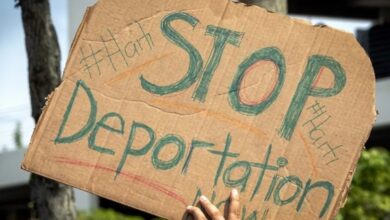The Sending of Family Remittances to Nicaragua Registers a New Record as of November 2023
The Nicaraguan economy received a new record of 4,239.8 million dollars in family remittances, between January and November, 46.8% more than in the same period of 2022, of which 3,504.5 million dollars came from the United States. United States, the Central Bank of Nicaragua reported this Wednesday.

Photo: Freepik
EFE
Escucha este artículo
Leer en español: El envío de remesas familiares a Nicaragua registra un nuevo récord a noviembre de 2023
Historical Record in Remittances: Nicaragua Receives 4,239.8 Million Dollars
The historic amount surpassed the previous record of 3,844.4 million dollars that Nicaragua received in remittances between January and October, according to statistics released by the State issuing bank.
The figure of 4,239.8 million dollars in remittances received as of November is also higher than the 3,224.9 million dollars in all of 2022 and represents 27.1% of Nicaragua's gross domestic product (GDP), according to the official figures.
"This result was mainly explained by the 58.9% increase in flows from the United States, equivalent to an additional 1,298.4 million dollars compared to the same period last year," highlighted the monetary entity.
The main countries of origin of remittances continue to be the United States, with 82.7%; followed by Costa Rica with 6.9%, and Spain with 5.9% of the total, the Central Bank detailed.
83 of every 100 dollars come from the US.
Of the total received as of November, remittances from the United States were 3,504.5 million dollars, which registered a year-on-year growth of 58.9%.
Those from Costa Rica totaled 294.6 million dollars, with an increase of 19.5% and those from Spain totaled 249.5 million dollars, for an increase of 1.7% in interannual terms, the issuer specified.
In contrast, decreases were observed in remittance flows from Panama (-14.5%) and El Salvador (-6.3%), the source added.
Nicaragua increased its economic growth projection to a maximum of 5% in 2023 and 4.5% in 2024, "based on the behavior of a set of variables (exports, collection, credit, remittances, tourism, among others). , as well as the positive evolution of the country's main commercial partners," according to the Central Bank.
The initial forecast was to grow in a range between 3% and 4%, with inflation between 6% and 7%.
IMF: Remittances will reach 28% of Nicaragua's GDP
The International Monetary Fund (IMF) forecasts a 4% growth in Nicaragua's economy in 2023, driven by the record collection of family remittances, and 3.5% in 2024.
The IMF expects family remittances to reach around 28% of Nicaragua's GDP by the end of 2023, double their level at the end of 2021, driven by the rapid increase in Nicaraguan emigrants.
Nearly 20% of the total Nicaraguan population, estimated at 6.7 million, lives abroad, mainly in the United States and Costa Rica, and it is estimated that half of them do so undocumented.
A total of 217,052 Nicaraguans were detained in 2022 at the southern border of the United States, according to data from the Customs and Border Protection Office (CBP).
Read also: Chile's Rejected Constitution Leads to Economic Uncertainty Amid Social Unrest
Since the crisis broke out in Nicaragua in April 2018, at least 344,000 Nicaraguans have been intercepted on the southern border of the United States, according to the CBP.
The crisis that Nicaragua has been going through since then has caused the largest exodus in its history, even greater than that of the 1980s, when a civil war was fought in the country that left tens of thousands of dead, according to the report "Situation of the People forcibly displaced Nicaraguans", prepared by Nicaragua Never Again Human Rights Collective.




